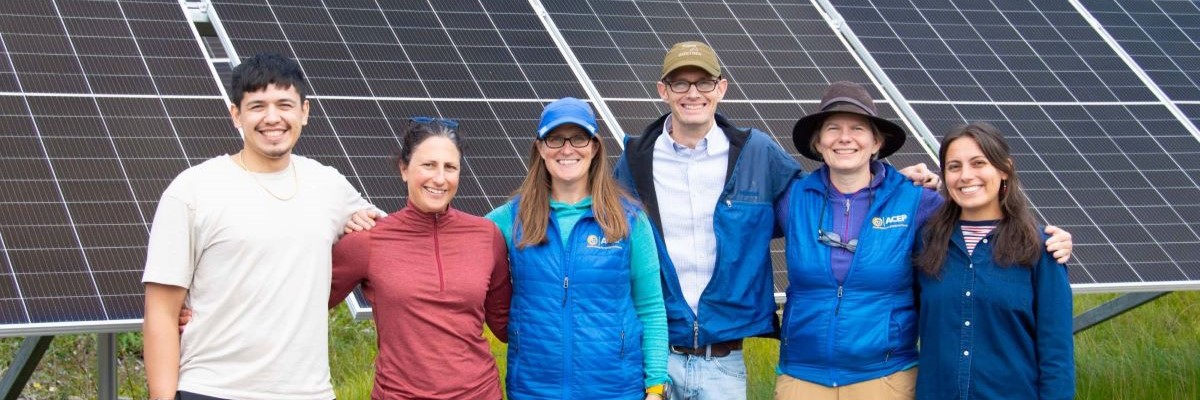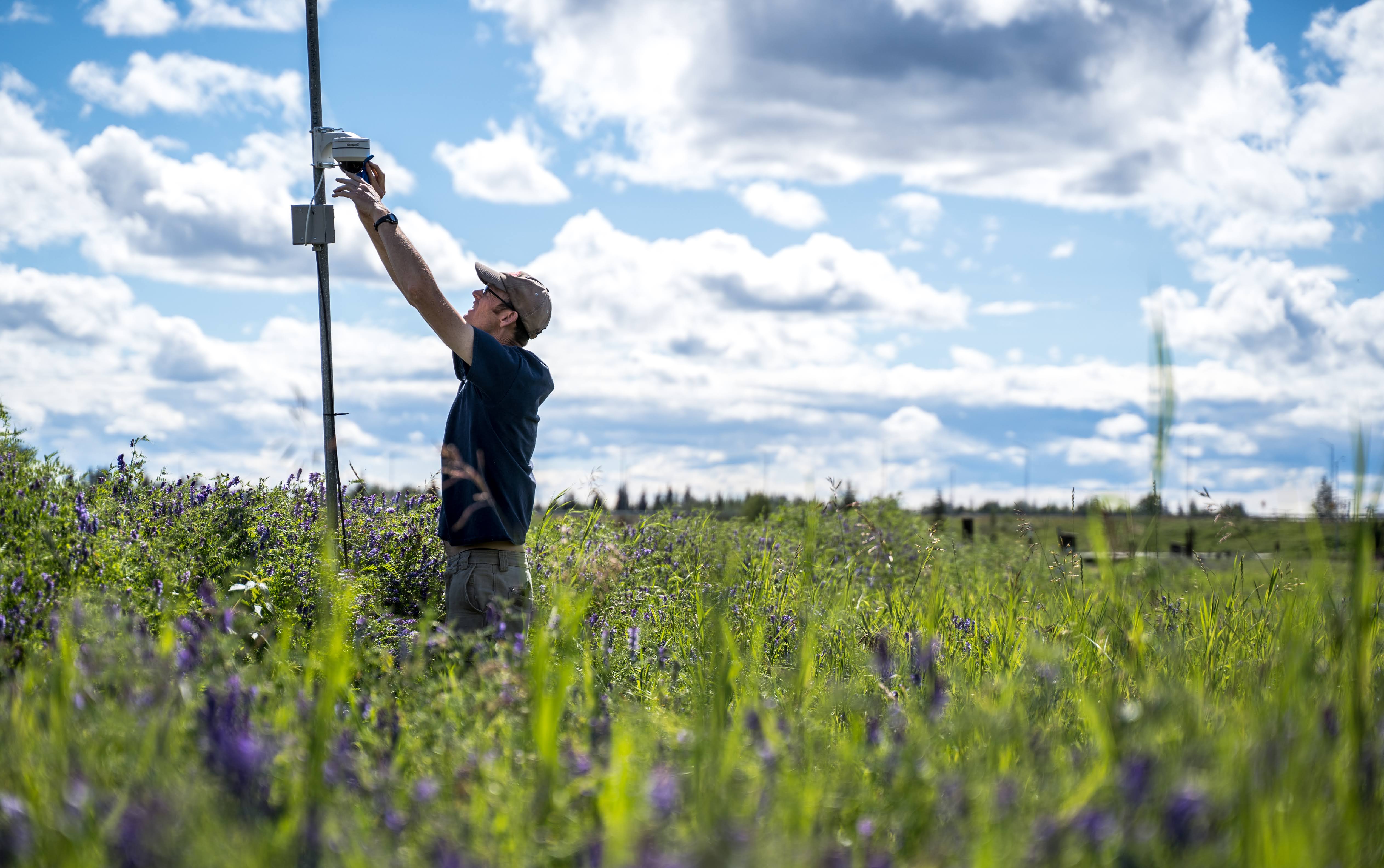Farewell Chris

Chris Pike (third from right) and Savannah Crichton (far right) stand with ACEP colleagues in front of a solar array at the 8.5 MW Houston Solar Farm near Anchorage, the largest solar farm in the state, where agrivoltaics is taking place.
By Savannah Crichton
September 26, 2024
During my weekly meetings with Chris Pike, ACEP’s former Solar Technology Program manager, I got to know him through the storied objects that filled the shelves around his desk.
He would explain concepts by pulling out data loggers, rummaging through toolboxes and referencing out-of-commission meteorological stations that he kept around “just in case.”
But Chris’ knowledge of solar photovoltaics, geothermal energy and data collection extends far beyond the four walls of his Anchorage office. As ACEP bids farewell to Chris Pike, I want to take a moment to reflect on his journey from intern to leader in renewable energy in Alaska.
While living in Bethel and working various odd jobs, Chris witnessed a dramatic increase in heating fuel prices. Observing the impact of volatile fuel prices on rural Alaska sparked his interest in the state’s energy and renewable landscape. After earning a master’s degree in technology from Appalachian State University, he interned at ACEP, researching solar thermal deployment in the Arctic. The following summer, he returned for another internship and worked at Pilgrim Hot Springs, assisting with project management, well logging and other geothermal work. These projects were not just technical challenges; they were about ensuring that remote communities had access to sustainable energy.
His experiences evolved into a skill set marked by stellar adaptability and critical analysis, leading him to join ACEP full-time as a research engineer.

Chris Pike adjusts equipment at the solar test site on the University of Alaska Fairbanks campus.
Chris pursued his interest in solar energy by tracking adoption trends as the price per watt dropped and the technology gained popularity. He produced datasets on solar performance in cold temperatures, the effects of high latitudes on energy production and integration challenges within the Railbelt. Chris, along with former ACEP member Erin Whitney, even built a solar test site to evaluate these factors while contributing to real-world applications, such as the Solarize campaign, snow-shedding research and an agrivoltaics experiment.
Over his 11 years at ACEP, Chris consistently promoted renewable energy initiatives, always finding the right tool — whether that was a strategic partnership, an international collaboration or a set of pyranometer wires.
His transition to a new role at Renewable IPP marks the end of an era at ACEP but also ignites excitement as he continues to advance renewable energy in Alaska. Chris Pike’s legacy is one of innovation, collaboration and commitment.
Thank you for everything, Chris. We’ll miss you around here but can’t wait to see what you’ll accomplish next.



